Introduction
In today’s rapidly evolving business landscape, the adoption of payment automation is no longer a luxury but a necessity. This transformative technology redefines financial efficiency, enabling organizations to streamline processes, reduce errors, and enhance cash flow management. By automating payments, businesses can minimize manual tasks, leading to significant time and cost savings.
This shift not only improves operational accuracy but also fosters stronger vendor relationships by ensuring timely and consistent transactions. As companies like St. James Winery and Cracker Barrel have demonstrated, integrating automation can address labor shortages, enhance security, and ultimately drive better financial performance. Moreover, the strategic implementation of automation in accounts payable and receivable processes unlocks unprecedented control and insight, empowering organizations to focus on innovation and strategic growth.
The following sections delve into the myriad benefits of payment automation, key areas for its application, and practical steps for effective implementation, illustrating how businesses can harness this powerful tool to achieve operational excellence and sustained success.
Benefits of Automating Payments
Automating transactions revolutionizes financial processes by significantly reducing the time spent on manual entries and approvals. This transformation leads to quicker payment cycles, fostering stronger vendor relationships and enhancing trust. For instance, St. James Winery, one of the leading wine producers in the U.S., experienced higher margins and improved efficiency by incorporating mechanization, addressing labor shortages, and scaling operations seamlessly. Furthermore, mechanization reduces human mistakes, which can lead to expensive errors, guaranteeing reliable and foreseeable monetary transactions.
The efficiency achieved through mechanization allows teams to concentrate on strategic initiatives rather than repetitive tasks, ultimately driving better financial performance. Companies that have embraced full AP and AR automation report significant cost savings and increased cash flow. For example, businesses that automate expect to see accurate, efficient, and streamlined processes, with over 90% anticipating improved data availability and insights within the next three years. Straight-through processing (STP) further enhances this transformation by expediting transaction processing, reducing errors, and eliminating repetitive tasks, making it a strategic business imperative in today’s fast-paced landscape.
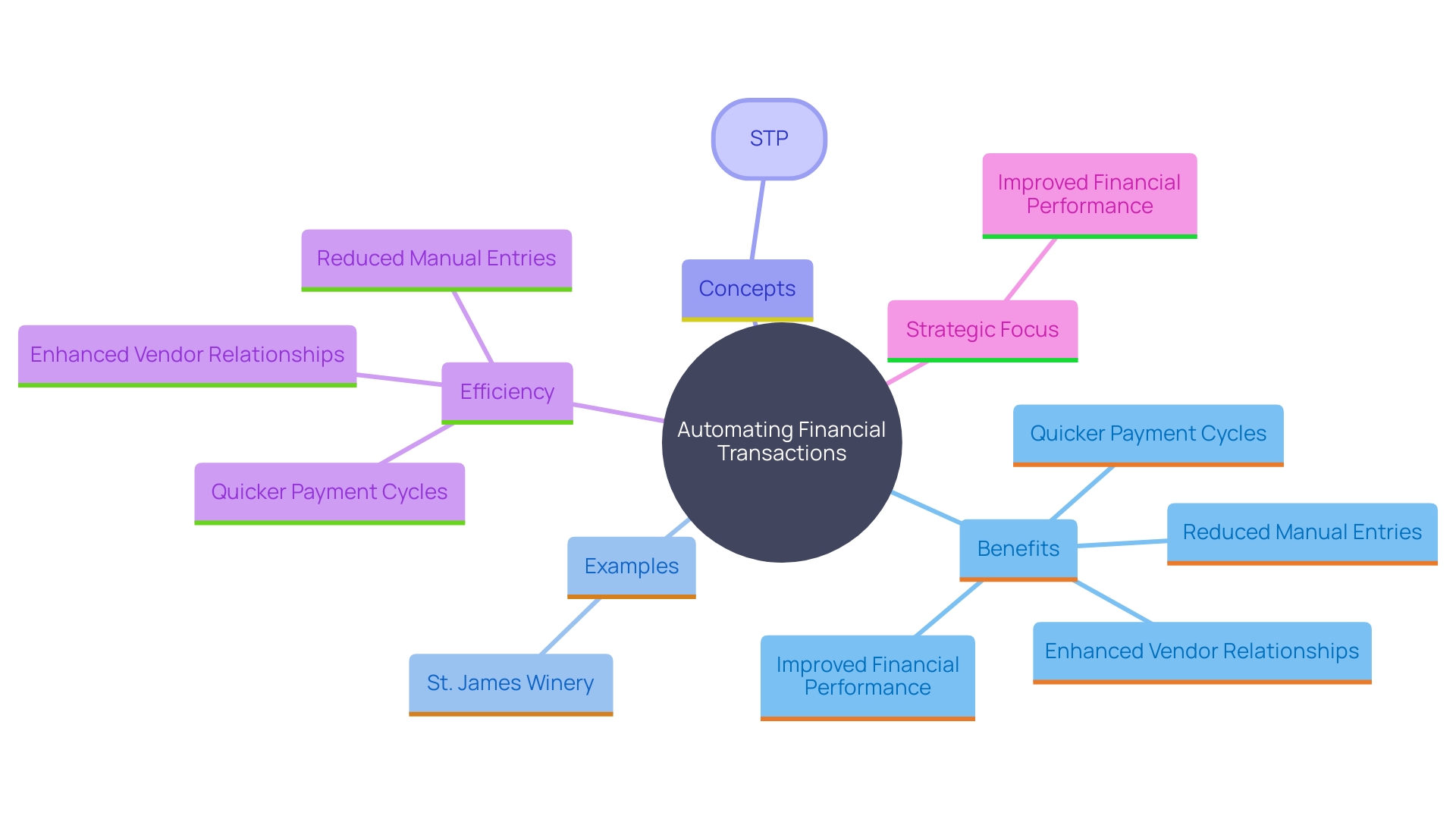
Key Areas for Payment Automation
‘Payment streamlining plays a crucial role across various stages of monetary workflows, significantly enhancing efficiency and precision.’. In invoice processing, automation captures data directly from documents, eliminating manual entry and reducing potential errors. This not only saves time but also ensures data accuracy, which is essential for maintaining monetary integrity. Automated transaction approvals leverage predefined workflows to expedite authorizations, enabling faster processing and reducing bottlenecks.
Automated reconciliation processes align transactions to invoices, simplifying monetary operations and ensuring consistency between bank statements and internal records. This integration reduces the risk of human error, as highlighted by the reduction in workload noted by companies like SeatGeek, which saw a decrease from 20 hours to just one hour per week on expense management due to AI-powered technology.
Furthermore, mechanization in reporting produces immediate insights, empowering decision-makers with current economic data for improved strategic planning. ‘Starbucks’ experiment with contactless transactions via geolocation demonstrates how automation can enhance customer experiences by reducing transaction times and errors. The integration of RPA and AI in economic systems not only improves operational efficiency but also enhances data security by minimizing manual data entry and identifying potential fraudulent activities.
Incorporating these automated solutions enables businesses to redirect valuable resources to strategic initiatives, fostering innovation and critical thinking. As banks and transaction firms modernize their platforms, the focus on security remains crucial to ensure consumer trust while delivering seamless, hassle-free transactions. The overall effect of transaction automation is significant, providing companies with unparalleled authority and understanding of their economic operations.
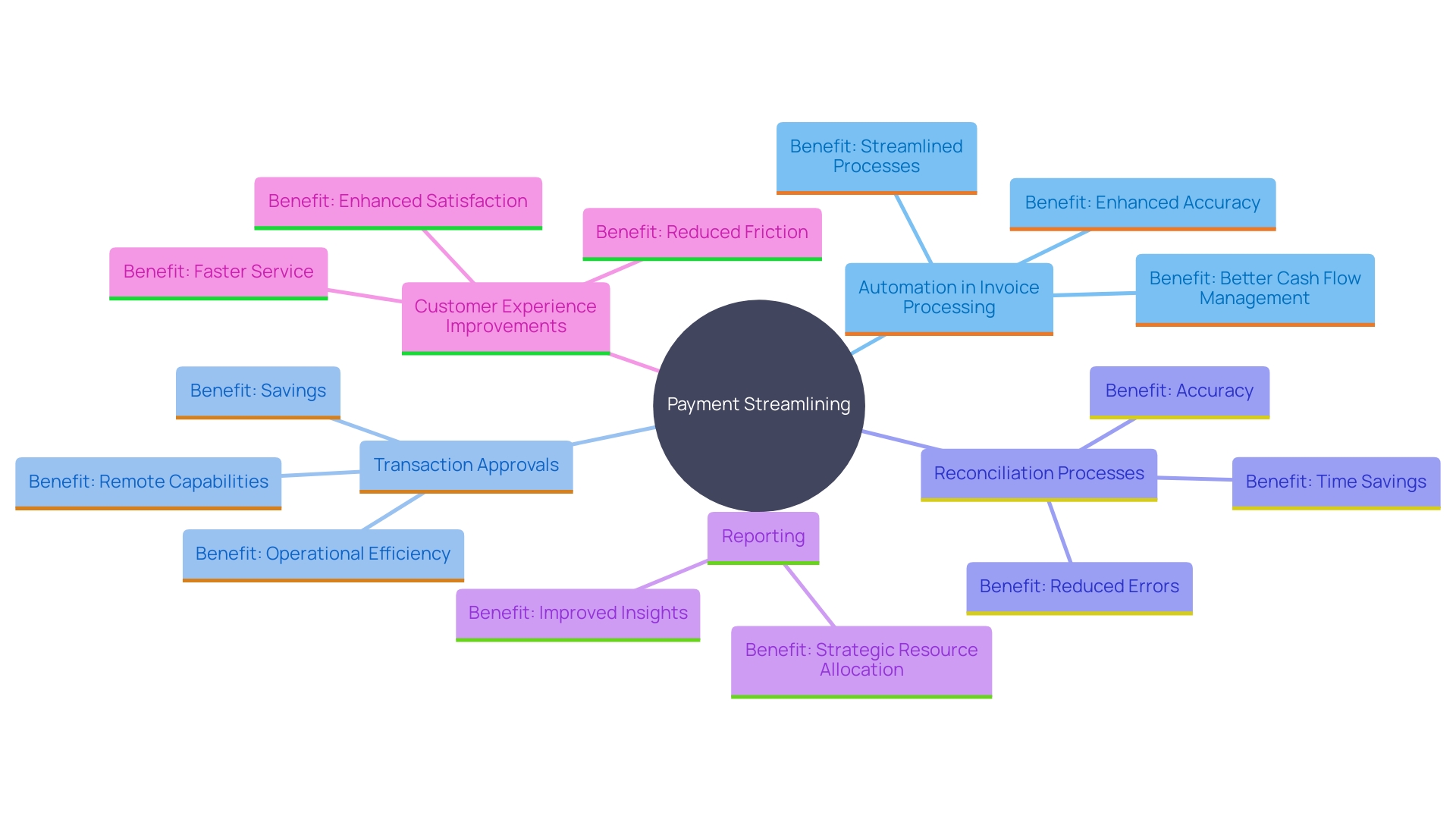
Improving Financial Efficiency with Automation
Automating payment systems can revolutionize financial efficiency for organizations. The transition from manual to automated systems significantly reduces the days payable outstanding (DPO), thereby improving cash flow management. For instance, Cracker Barrel, a restaurant and retail chain, reduced their reconciliation process from over 40 hours to under two hours per month, resulting in $15,000 annual savings on manual processing costs. This shift also eliminated credit card fraud for hotel charges, demonstrating the security benefits of automation.
Automated systems enhance transparency, enabling better tracking of expenditures and more accurate forecasting. ‘The integration of transaction solutions with existing financial systems not only streamlines operations but also optimizes resource allocation, ultimately reducing operational costs.’. As noted in a report by the Association for Financial Professionals, 46% of organizations transitioned from paper checks to electronic transactions to facilitate straight-through processing (STP), which accelerates the remittance and settlement process, minimizing errors and enhancing efficiency.
‘Real-time transaction data offers significant potential for improving business cash flow, enhancing customer experiences, and reducing costs.’. With newer transaction rails like RTP and FedNow, funds can be transferred within seconds, 24/7, providing businesses with the agility needed in today’s fast-paced environment. This increased efficiency and quality in financial transactions help organizations stay competitive and responsive to market demands.
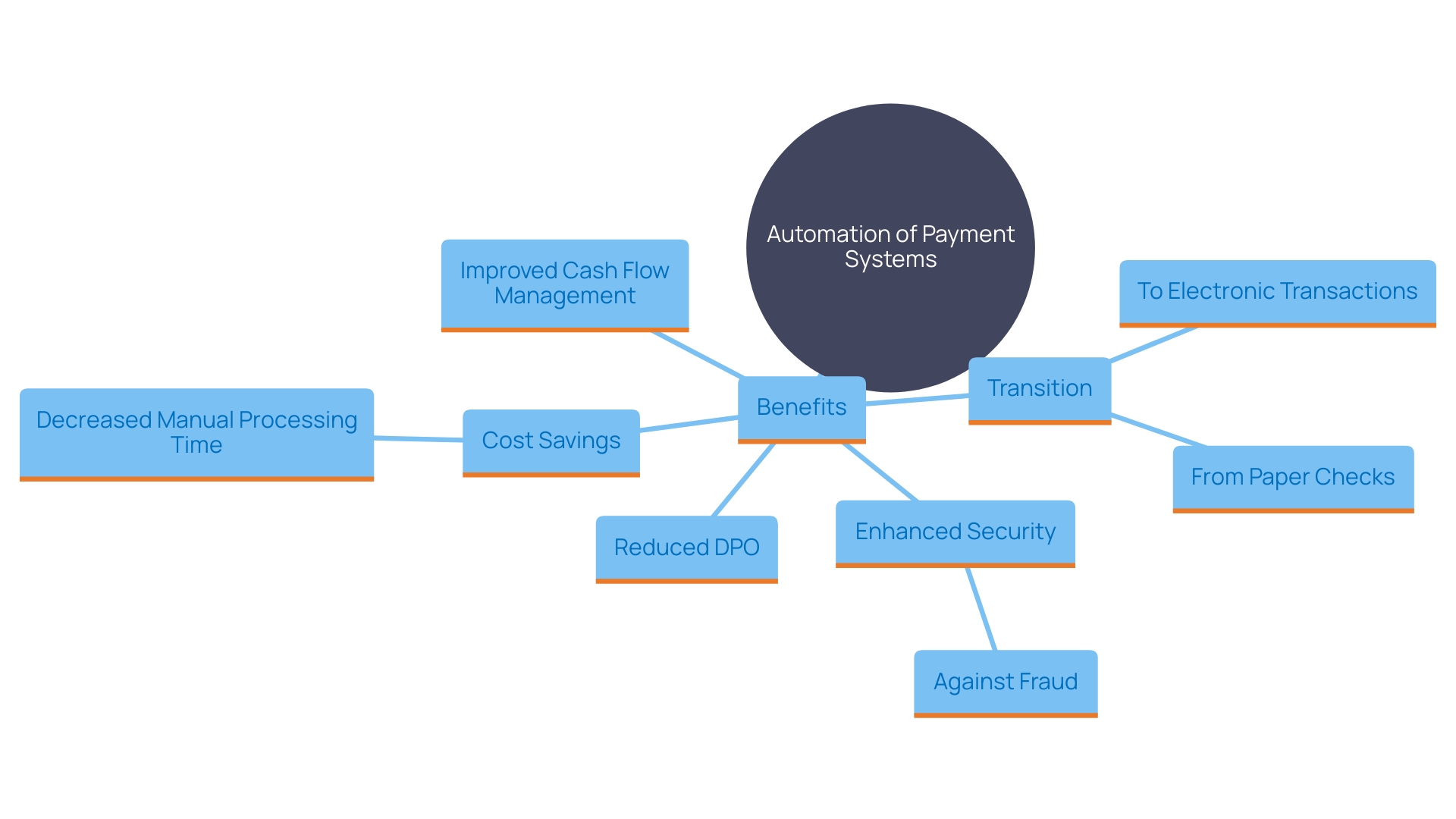
Enhancing Cash Flow Management
Automating transactions significantly enhances cash flow management by ensuring timely disbursements and minimizing delays. Organizations can implement scheduled transactions to avoid late fees and capitalize on early settlement discounts. This proactive approach allows for more accurate cash flow forecasting, helping companies allocate resources more effectively and make informed financial decisions. According to a report in collaboration with Wex, secure and streamlined transaction processes are highly valued by heads of finance in middle-market firms. Flexibility and simplicity in transaction conditions are important for 22% and 20% of respondents respectively. This focus on efficient transaction systems is crucial, especially as more than 90% of heads of finance experienced frictions when settling with suppliers in the past year. The incorporation of artificial intelligence (AI) can further improve operational efficiency, making transaction methods smoother and more dependable. As a result, firms can better manage supplier relationships and mitigate uncertainties, ensuring operational efficiency and stability.
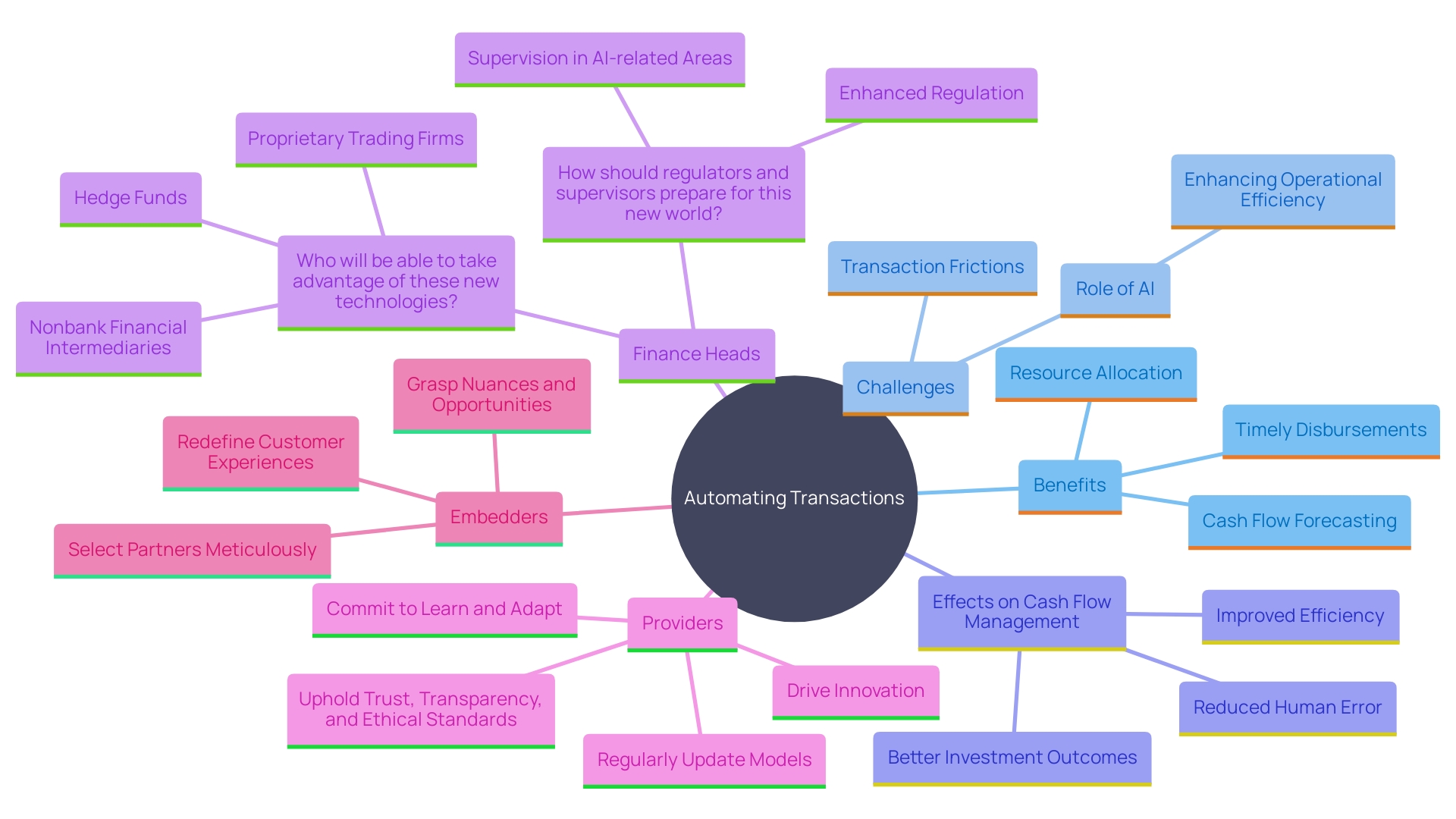
Reducing Errors and Fraud
Automated payment systems have transformed the manner in which transactions are managed, significantly lowering the risk of mistakes usually linked with manual data entry. These systems offer enhanced security measures such as multi-factor authentication and encryption, which are crucial in mitigating the risk of fraud. For instance, the implementation of real-time online transaction pre-authorization processes helps combat credit card fraud by screening transactions almost instantaneously, allowing only legitimate ones to proceed.
The integration of artificial intelligence (AI) further elevates security by analyzing transaction patterns to detect potential fraudulent activities. Visa’s new AI-driven system, Visa Provisioning Intelligence, exemplifies this by utilizing machine learning to evaluate transactions according to their probability of fraud, significantly assisting institutions in minimizing losses.
Moreover, by establishing clear protocols and audit trails, organizations can ensure compliance with regulatory standards and protect sensitive financial information. This proactive approach not only safeguards data but also provides a competitive advantage by fostering trust among customers who expect secure and seamless transactions in today’s digital age. With the added convenience and efficiency of automated systems, businesses can redirect their resources towards innovation and strategic initiatives, ultimately driving growth and resilience.
Streamlining Accounts Payable and Receivable
Automation has become a pivotal element in optimizing accounts payable (AP) and accounts receivable (AR) functions, yielding significant benefits for organizations of all sizes. In AP, automated workflows accelerate approval procedures and transactions, ensuring prompt and precise dealings. This is especially important as 66% of businesses view AP activities as vital for sustaining operational efficiency.
On the AR side, automation enhances invoicing and payment collections, reducing the time and effort required to manage outstanding payments. Automated reminders and follow-ups ensure that invoices are paid promptly, which is vital for maintaining a healthy cash flow. This synchronization between AP and AR activities not only enhances cash flow but also increases overall operational efficiency.
Based on a PYMNTS Intelligence and American Express study, 29% of companies have automated their AP and AR tasks in the past two years, influenced by remote work necessities. The advantages of mechanization, including streamlined processes, enhanced accuracy, and improved cash flow management, are evident. However, the approach to automation varies based on company size. Large companies with intricate requirements emphasize remote functionalities, while smaller businesses concentrate on transactions that provide economic benefits such as discounts for prompt returns. Mid-size companies, conversely, aim for consistent contributions to improve long-term operational effectiveness, with 42% concentrating on consistent amounts and 36% on regular intervals.
The process of streamlining can greatly lower operational expenses and enhance fiscal clarity, allowing companies to redirect savings to other essential sectors such as inventory acquisition and supplier transactions. By adopting mechanization, organizations can manage the intricacies of money handling more efficiently, ensuring ongoing business success.
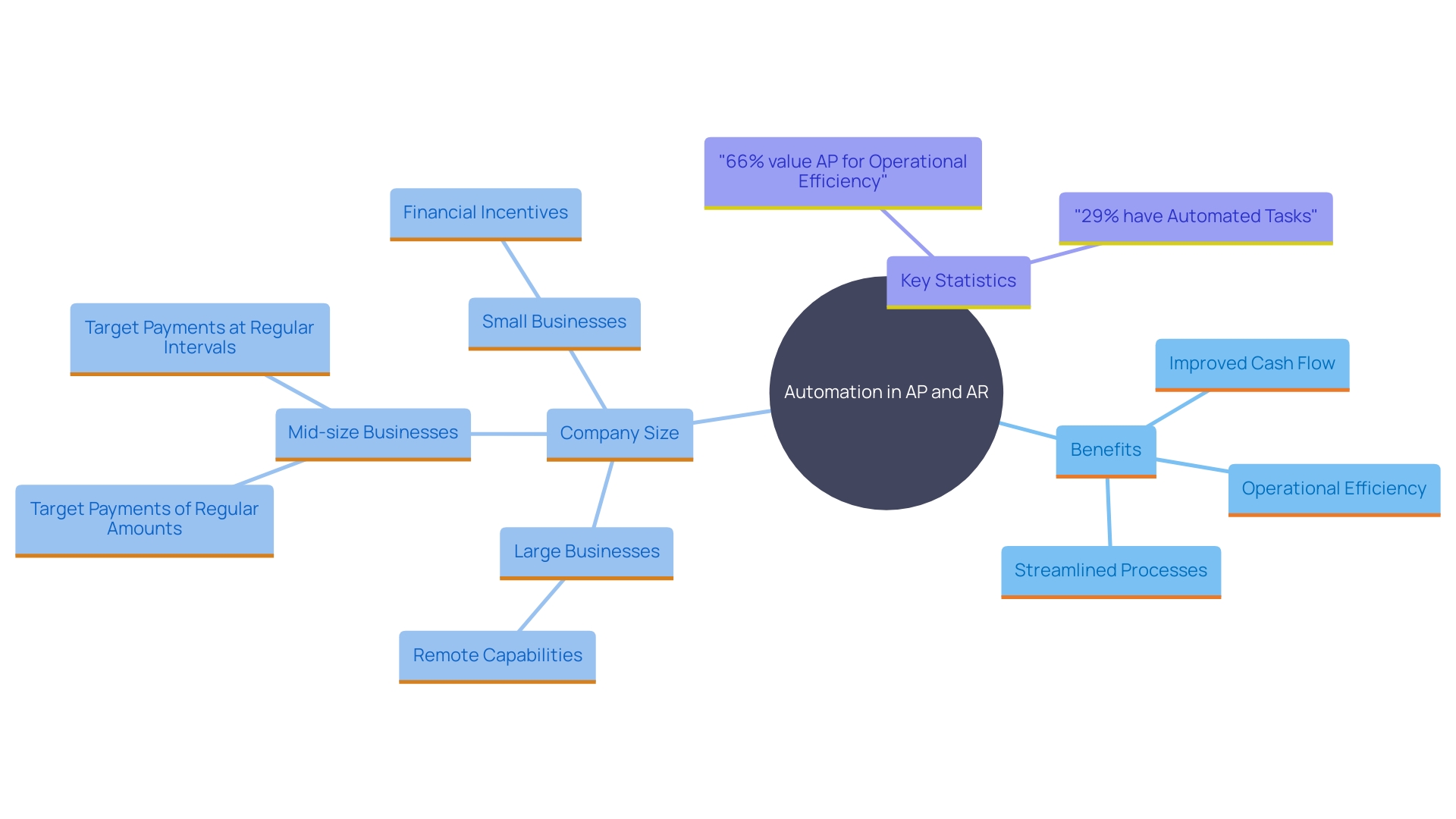
Implementing Payment Automation
Implementing payment processing effectively requires strategic planning and careful execution. Begin by thoroughly assessing current financial workflows to pinpoint inefficiencies and potential areas for improvement. Choosing the right technology that seamlessly integrates with existing systems is fundamental. For example, when a hospital network set up a new technology team, they collaborated with finance experts to reorganize workflows and create a tool that suited the new method. This partnership not only simplified processes but also liberated staff for more valuable assignments, highlighting the transformative impact of technology.
Training staff and setting up clear processes are vital for a smooth transition. This approach was evident in the case of a finance department that utilized technology to manage data more efficiently, allowing for scalability and improved handling of an increased number of transactions. Moreover, integrating automation with data analytics can help identify trends and make informed decisions, leading to more strategic resource allocation.
Safety and confidentiality are crucial in transaction technologies. Managers should invest in robust security measures and maintain transparent communication about data protection practices to build trust with users. As stated in a report from the Association for Financial Professionals, 46% of organizations transitioned to electronic transactions to enable straight-through processing (STP). This system automates the entire payment process, reducing errors and increasing efficiency.
As businesses continue to navigate the shift towards automation, it’s essential to understand that the approach may vary by company size. Large firms often require remote capabilities, while smaller firms may focus on immediate financial incentives. Mid-size companies, targeting regular payments, can achieve long-term operational efficiency, improving cash flow management and redirecting savings to optimize operations further. By integrating automation, companies not only streamline processes but also enhance security, reduce manual intervention, and ultimately improve the overall customer experience.
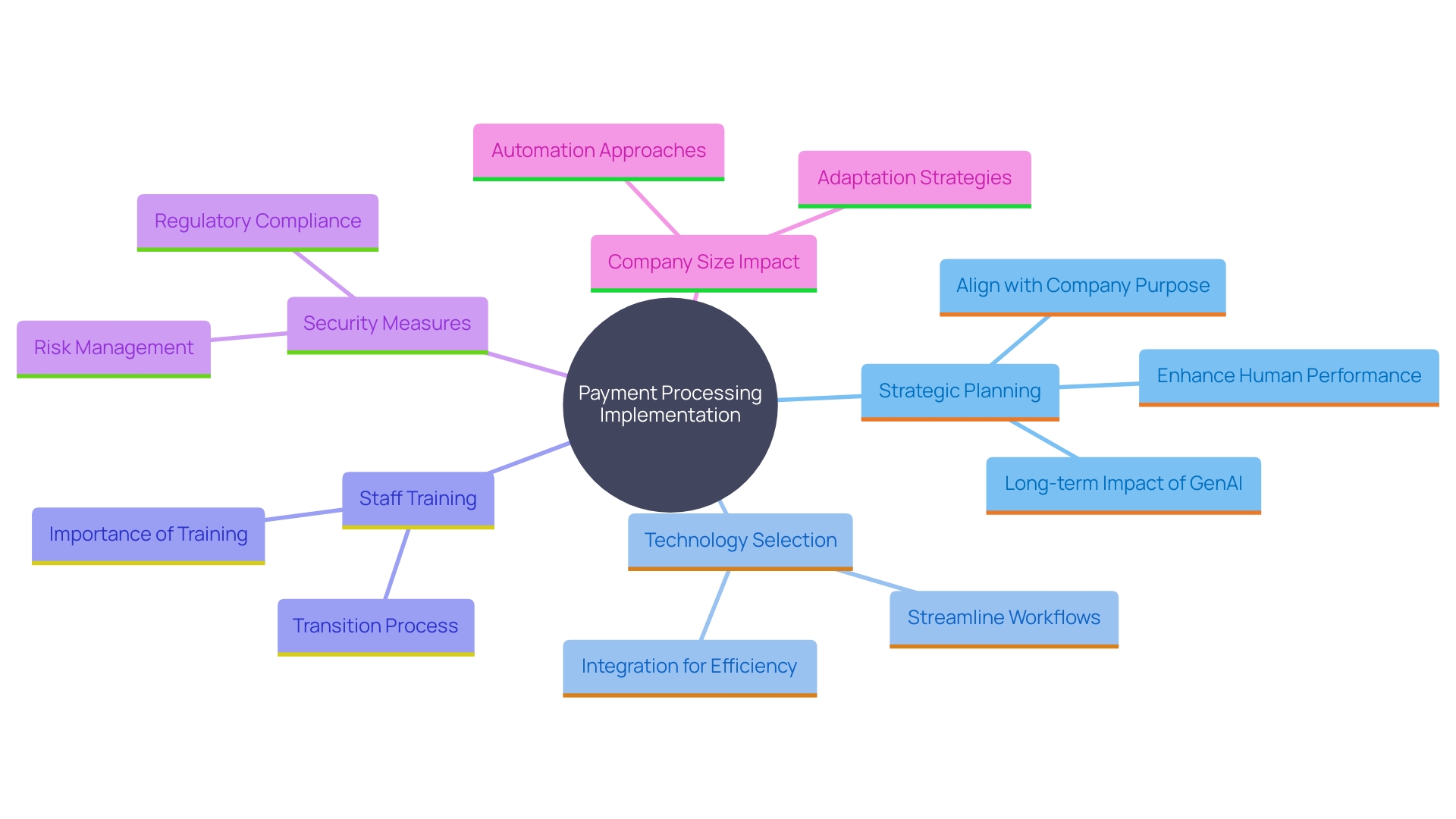
Conclusion
The integration of payment automation emerges as a critical strategy for organizations aiming to enhance financial efficiency and operational performance. By significantly reducing manual tasks, automating payments allows businesses to streamline workflows, minimize errors, and foster stronger relationships with vendors. As evidenced by case studies from companies like St. James Winery and Cracker Barrel, these efficiencies translate into tangible benefits, including cost savings and improved cash flow management.
Furthermore, payment automation serves multiple facets of financial operations, from invoice processing to reconciliation and reporting. The role of artificial intelligence and real-time data analytics cannot be overstated, as they empower organizations to make informed decisions and optimize resource allocation. The transition to automated systems not only mitigates risks associated with manual data entry but also enhances security, ensuring compliance and building trust among customers.
Implementing payment automation is not merely about adopting new technology; it requires strategic planning, staff training, and a focus on security measures. As organizations navigate this transformative journey, a tailored approach that considers company size and specific needs will be essential. Embracing automation will not only lead to improved operational efficiency but also position businesses for sustained growth and innovation in an increasingly competitive landscape.

